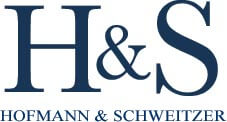 Modern construction work wouldn’t be possible without power-operated equipment. However, loaders, excavators, and other motorized tools can weigh several tons, placing the workers around them at risk of injury. and Our New York construction injury lawyers explain state regulations to protect equipment operators and employees while working with heavy machinery.
Modern construction work wouldn’t be possible without power-operated equipment. However, loaders, excavators, and other motorized tools can weigh several tons, placing the workers around them at risk of injury. and Our New York construction injury lawyers explain state regulations to protect equipment operators and employees while working with heavy machinery.
NY Industrial Code Provisions for Power-Operated Equipment on Construction Sites
NY Labor Law 241 requires owners and contractors to make construction sites as safe as possible for workers. Under Section 241(6), owners and contractors must comply with any rules made by the Commissioner of the Department of Labor to carry out the provisions of the law.
The Department of Labor has created specific construction safety rules in Part 23 of the New York Industrial Code to protect people employed in construction, demolition, or excavation. N.Y. Comp. Codes R. & Regs. Tit. 12 § 23-9.2 set forth the following general provisions for power-operated equipment:
Maintenance
Power-operated equipment must be maintained to be in good repair and in proper operating condition. Thorough and frequent inspections must be made, and necessary repairs or replacements must correct any structural defects or unsafe conditions. The servicing and repair of power-operated equipment must be performed under the supervision of a designated person while the equipment is at rest.
Operation
Power-operated equipment used in construction, demolition, or excavation may only be operated by trained, designated persons who must remain at the controls while handling any load. Operators of power-operated material handlers must safely operate equipment at all times. No person may ride on the loads, buckets, blades, slings, balls, hooks, or similar parts of power-operated equipment or machines.
Loading
Power-operated material handling equipment may not be loaded to exceed the manufacturer's design live load rating. All loads shall be properly trimmed to prevent dislodgment of any parts during transit.
Protection of Moving Parts
Safety-compliant guards must be installed where gears, belts, sprockets, drums, sheaves, and other points of contact between moving parts of power-operated equipment or machines are not guarded by location.
Refueling
The engines of power-operated equipment or machines must be stopped while refueling, except turbo-charged diesel engines that prevent fuel exposure to the atmosphere. Open flames and spark-producing devices must be kept a safe distance away from any area where engines are being refueled. No person may smoke or carry lighted smoking materials in refueling areas.
Engine Exhaust
Steam or engine exhaust gases from power-operated equipment must be discharged in an area that will not contaminate the air in a work zone. All steam or gas discharges must comply with any regulations, orders, or laws promulgated by any authority concerned with air pollution.
Equipment at Rest
Material handling equipment operators may not leave loads, buckets, or blades suspended. Instead, loads, buckets, or blades must be brought to rest on blocks, lowered to the ground, or brought to the lowest end of travel of the equipment.
Rollover Protection
All self-propelled earth-moving, excavating, or grading equipment or machines manufactured after July 1, 1971, sold or offered for sale in New York State must be equipped with an approved rollover protective structure. Protective structures must be designed, constructed, and installed to protect the operator in the event of accidental overturning and are required regardless of whether the equipment is mounted on crawlers or wheels. Examples of this equipment include graders, bulldozers, and tractors with a flywheel horsepower of 50 or more; front-end loaders with bucket capacity rated at one cubic yard or more; and scrapers or off-highway haulers with capacities rated at five cubic yards or more. Exception: Tractors with pipe-laying equipment installed are not required to have rollover protection structures.
Seat Belts
All equipment required to have a rollover protection structure must also be provided with an approved seat belt for each seat. The operator must wear a seat belt whenever the equipment is being operated.
Learn Your Options After a New York Construction Work Injury
If you or someone you love was hurt by heavy machinery on a construction site, the attorneys at Hofmann and Schweitzer could help. We can investigate the incident and determine whether a site owner or third party could be liable for your injury costs. Call us today at 800-362-9329 to have us explain your next steps at no charge to you, or read our FREE guide, Hurt in a Construction Accident? You’re Not Alone.

